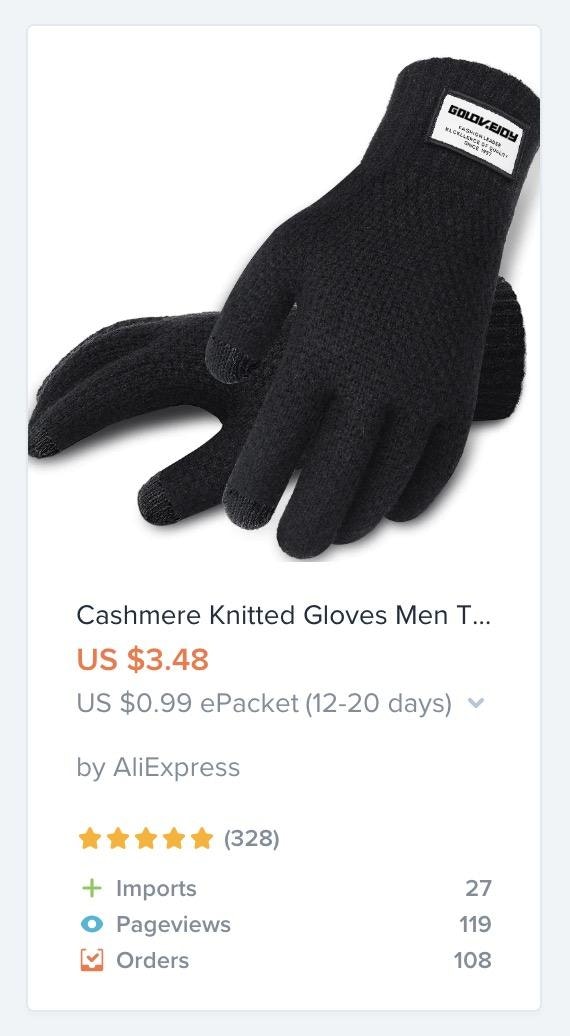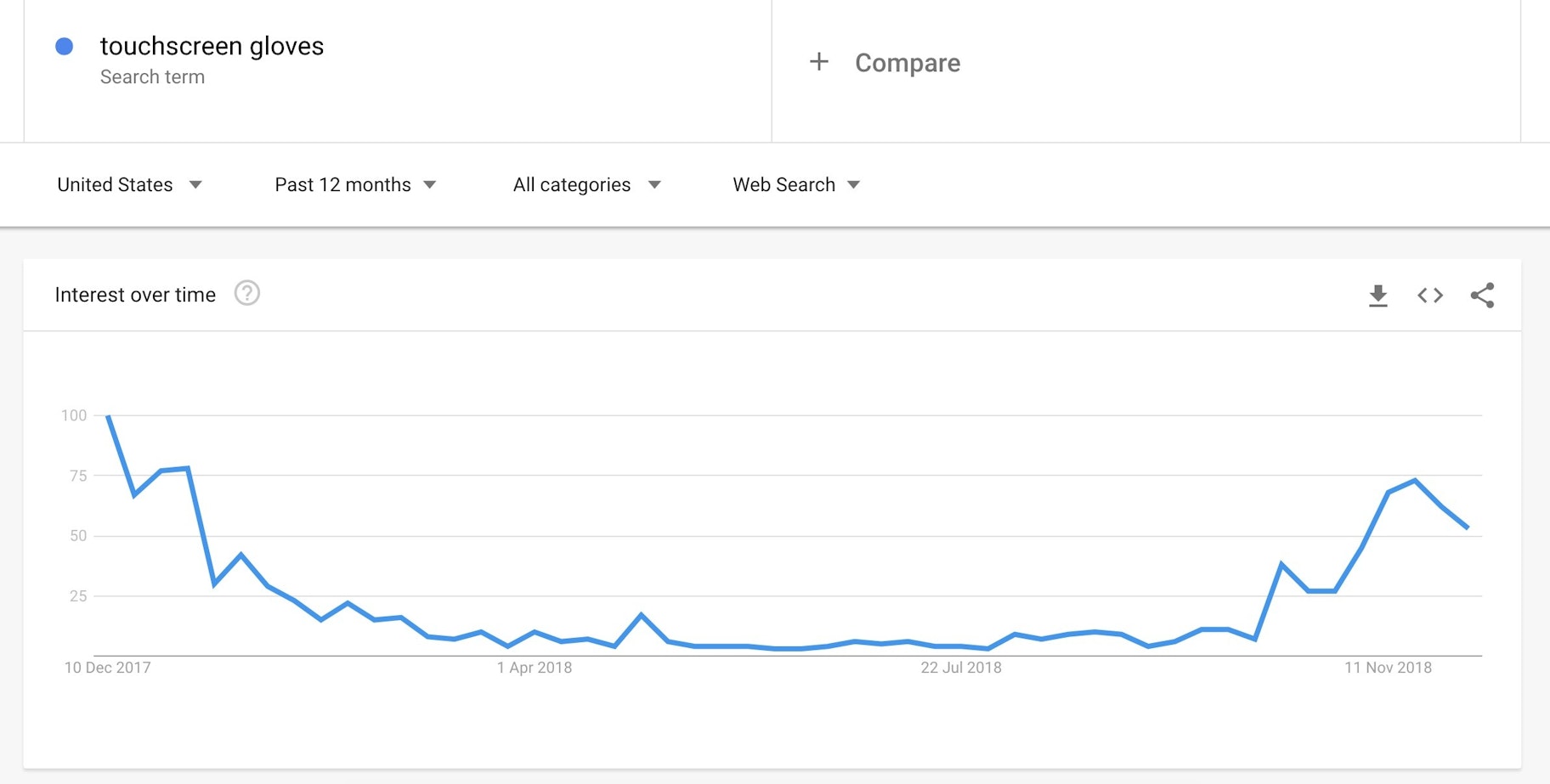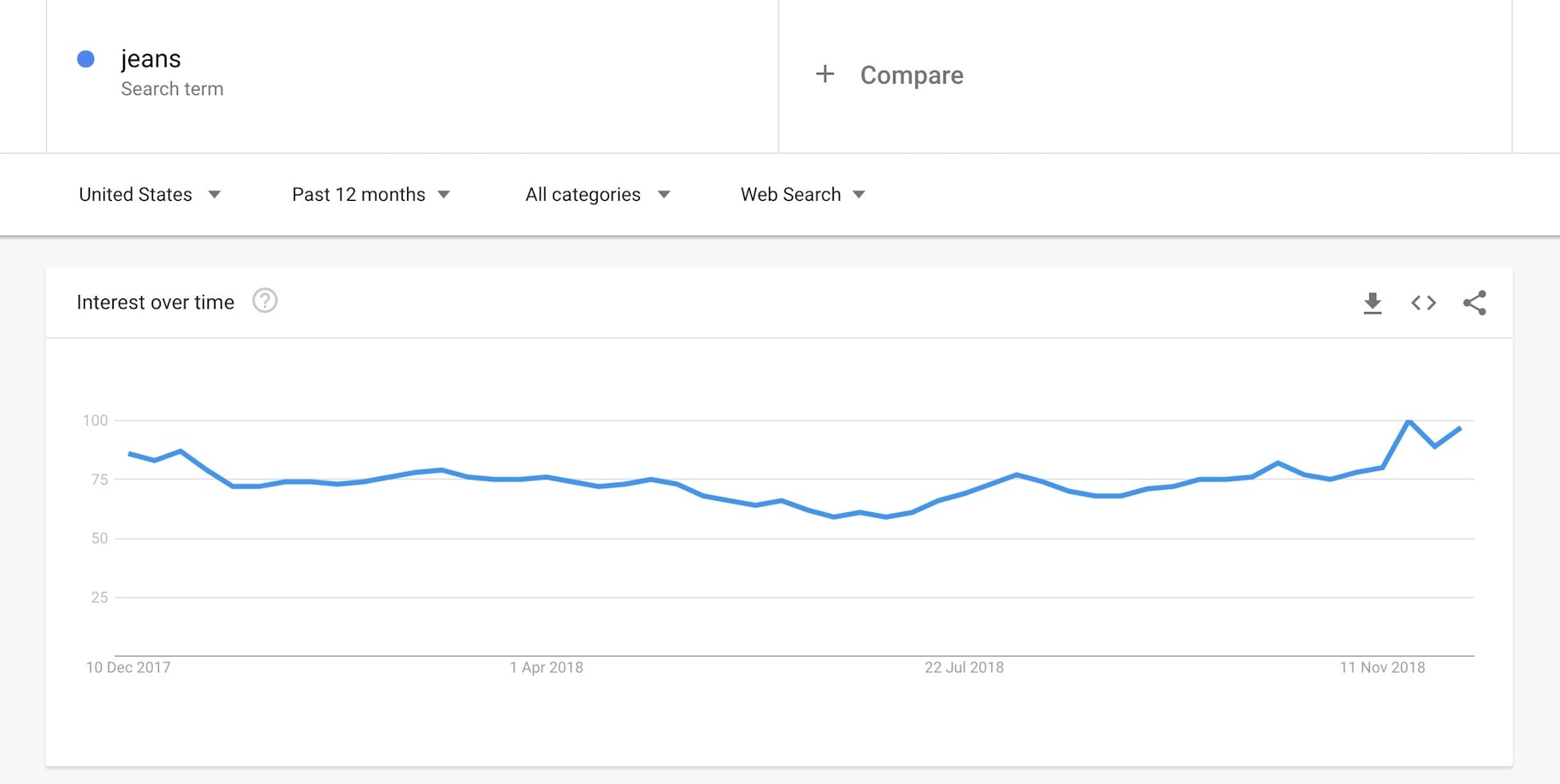Every day entrepreneurs across the world run into the same problem: they know that they want to start their own business, but they don’t know what to sell.
They’re well aware that choosing products is an important process, so they’re constantly looking for “the next big thing” – a product that will set them apart from their competition.
Sound familiar?
If it does, we’ve got something to tell you: you don’t need to sell trending products to find success in ecommerce.
And that’s exactly why we’ve created this article – we’ve seen many entrepreneurs over the years focus their energy into finding trending products, but they aren’t your only answer.
Today we’ll explain why going with products that are steady sellers can pay off in the long-term, why it can be difficult to market trending products, and why it can be tough to build a sustainable brand by focusing all your efforts into selling trending products.
Ready? Let’s jump into it.



Finding Trending Products
Before we really dive into the pros and cons of selling trending products, it’s important that we underline how you can distinguish between a product that is trending, and a product that is a “steady seller.”
There are a few different resources which you can use to find trending products, but we recommend using two main ones: AliExpress and Google Trends.
→ Click Here to Launch Your Online Business with Shopify
Both of them are totally free and are fairly straightforward to use. They also contain a lot of information you can use to decide which products to sell, including:
- Price: You’ll see the price that it would cost to source the product highlighted in orange.
- Star Rating: You’ll find a star rating for every listing which ranges from 0 to 5 stars. You’ll also see the number of reviews which have been left for specific products in brackets next to the star rating.
- Orders: This highlights the number of orders that a specific product has received in the past 30 days.
You can use all of these statistics to check if a product is trending.
As a general rule, if you see that a product has received more than 20 orders in the past 30 days, it’s trending upwards.
Combine that with a relatively low number of imports, and a pageview statistic that isn’t too far away from the number of orders that the product has received, and you could be on to a winner, like this listing:

Okay, so it looks like touchscreen gloves could be a trending product – we just need to verify our idea on Google Trends next.
Why? Well, the Google Trends tool helps us to understand how many people are searching for specific terms on Google.
And, if something is ranking in the searches on Google, it’s safe to assume that people are interested.
So, let’s add “touchscreen gloves” into Google Trends and see what we find.

As you can see from the graph above, touchscreen gloves recently spiked in popularity.
These products aren’t at fidget spinner levels of trending, but they’ve certainly spiked in popularity recently. All in all, it’d be safe to say these are trending products.
Okay, so that’s trending products covered, but what about steady sellers?
A steady seller is a product which is consistent in popularity and sales over a sustained period of time.
Think staple products in a specific niche – things which most shoppers will need at some point.
As an example, I searched for “jeans” on Google Trends.

You can see in the image above that jeans are popular throughout the year.
If you’re interested in learning more about steady sellers, check out our detailed post on steady dropshipping niches.
Okay, now that we’ve covered how you can find trending products for yourself, let’s dive into the pros and cons of selling them.
BONUS: Looking for some inspiration for products to sell this winter? Check out our list of the best dropshipping products to sell this season.
What Goes Up Must Come Down

If you’re thinking about selling trending products, there’s something you need to know.
Those products are popular now, but it’s likely that they won’t be so popular forever.
This is the same with all things which are trending – whatever goes up must come down.
Sure, it’s likely that these products are going to generate revenue for your business if you can figure out how to put them in front of an audience of engaged shoppers.
But it’s unlikely that you’ll be able to count on trending products to be successful for a sustained period of time.
That’s exactly why it’s essential that you add some steady sellers to your store’s product list too.
But how can steady sellers help with fluctuations in popularity?
Well, if you can manage to market your trending products and draw in potential customers to your store, you can also highlight your steady sellers to shoppers and try to increase your average order value with upselling techniques.
Also, you can use email marketing tactics to generate repeat purchases from steady sellers from customers who purchase trending products from your store.
Or you could retarget your traffic with Facebook ads and promote newer trending products to shoppers who have visited your store in the past.
There are a ton of options, but it’s still important that you don’t rely too much on specific trending products.
Finding Your Audience

Finding an audience of shoppers who are interested in your products is rarely a simple task.
It’s even tougher if you’re just getting started with your ecommerce business, and trying marketing for the first time.
And, if you’re selling trending products, particularly ones which have unique features, it can compound the problem and make it quite difficult to understand who you need to market to.
On the other hand, if you were to try and market something more conventional, like men’s t-shirts, the process of finding your audience can be much simpler.
Think about it – how many times have you seen marketing campaigns for these products before?
You’ve already got a ton of ideas in your head about the marketing tactics which could work.
You probably see Facebook ads, Instagram posts, and emails promoting products to you each and every day – you can use them to your advantage.
It’s a little tougher when you’re selling unique products as you might not be able to replicate some of those tactics.
This means you’ll need to get creative with your marketing campaigns.
If you’re looking for marketing inspiration, you can check out our Facebook marketing guide.
Building a Brand
For entrepreneurs who are looking to build a successful business for the long-term, branding is vital.
After all, there is a lot more to think about when it comes to branding your business than your color scheme and logo.
Your branding is essentially everything that your business stands for.
And branding is becoming more and more important for shoppers, especially the younger generations.
So, with more and more ecommerce businesses launching every day, shoppers want to make sure that they’re spending their hard-earned cash on companies which they align with on a meaningful level.
Brands like Burt’s Bees are well aware of this, and have come up with branding campaigns like #BringBackTheBees – a partnership with beekeepers across the world which ensures that thousands of bee-friendly flowers are planted every year.

Burt’s Bees is famous for using honey in their beauty products, so this campaign ensures that their business is held accountable, and is positively contributing to the industry which they’re profiting from.
Does Burt’s Bees need to do this?
Simply put, no.
But, they know that sustainability is something which their customers care about, which means that they need to care about it to.
And campaigns like this are only possible for Burt’s Bees because they’ve found products which sell consistently, and they’ve built their brand around them.
So think about any trending products that you’ve been thinking about selling. Would you be able to build similar branding campaigns around them? Or, would they run out of steam before you can use them to shape your brand?
Generating Repeat Customers

Repeat customers are a business’ best friends.
In fact, recent research from Smile.io found that repeat customers can generate as much as 40% of an ecommerce business’ annual revenue.
I’m sure we can agree, that’s huge.
And, at the very least it highlights why we should always be thinking about what we can do to generate more repeat customers.
But, if you’re focusing all your efforts into selling trending products, will you be able to guarantee that your customers will come back to your store and make another purchase?
If, for example, you were selling fidget spinners in their peak, would shoppers be flocking back to your store to pick up a second one?
Or, would they be fine now that they’ve got what they’re looking for, meaning that their relationship with your brand is over?
If you think that your products fall into the “one-and-done” category for shoppers, we really recommend thinking about what you can do to draw in customers again.
Using Trending Products
Okay, so that’s it from our side – now you know how to find trending products for your business, and the pros and cons which come with selling them.
We just want to finish by making sure we’re crystal clear on one thing – trending products aren’t inherently good or bad.
There’s no doubt that they can offer your business a tremendous opportunity to generate revenue if promoted with clever marketing campaigns.
We just want to stress the point that you shouldn’t feel that you need to sell trending products to succeed in ecommerce.
We believe that coming up with a blend of trending products and steady sellers for your store is an approach which will enable you to generate more revenue over the long-term, and help you to build a sustainable business.
So, what do you think? Do you think that trending products are the best products for ecommerce entrepreneurs? Let us know in the comments below – we read them all!






